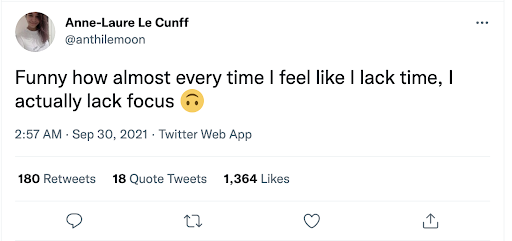Working remotely offers plenty of benefits. Goodbye, commute. Hello, ergonomic chair. But, it also brings unexpected obstacles to finding your flow.
The world and everyone else from your office likely keep clamoring for your attention like a toddler interrupting a live television interview. So, how do you maximize your time in Deep Work while working remotely?
Take three intentional steps. Build a better checklist with defined tasks. Use that checklist to create meaningful boundaries. And then optimize your schedule to nurture the focus required for Deep Work: sustained concentration free of distraction.
1. Put Tasks in a Checklist
In the beginning, the sheer scale of a project can feel overwhelming. Focus on the steps rather than the end destination. That’s why Adam Savage, a visual effects designer and co-host of MythBusters, has spent his career building a better checklist.
“The value of a list is that it frees you up to think more creatively, by defining a project’s scope and scale on the page, so your brain doesn’t have to hold on to so much information,” writes Savage.
- [] Start with Savage’s “brain dump.” Write down everything you need for a project.
- [] Next, break down each idea into tasks.
- [] Finally, organize those tasks into a sequential list that looks just like this.
A checklist provides you with a framework for tasks. It also gives small wins, the little boosts you get from literally checking the box.
Put in the Work to Free Up Memory
Tasks are part of every project. While weekly reviews and status reports – what Deep Work: Rules for Success in a Distracted World author Cal Newport terms “shallow work” – keep you connected to other people in the company, they also continually break into your flow state.
A ping. Three dots. I just need a 10 minute call.. Small, tiny interruptions have a very big impact on your ability to do deep work.
Freeing up RAM is critical because our active memory can only hold on to three to five items at a time. And it’s not only your available memory that’s the issue. Distractions and interruptions destroy your concentration.
Interruptions don’t just break up your flow, they make it harder to get back into the flow. A single interruption can take 23 minutes to move past. Unless you start acting as the gatekeeper for your memory, you’re going to keep getting distracted.

2. Create Meaningful Boundaries With a Batched Schedule
Checklists can be infinite. You are constantly reworking the list based off yesterday and today. Schedules, on the other hand, are finite. There are only so many working hours in the day.
Let the constraints of your calendar be a strength. Designate specific times to mark off tasks on your checklist and hold meetings. Likewise, designate the times when it’s just you and your code. Then, communicate your needs to the rest of your team. If you use a system like Slack, update your status to reflect the times that you are in Deep Work.
Let’s acknowledge the tension here. It may be hard to say you’re unavailable. Paul Graham refers to this as the maker’s schedule versus the manager’s schedule, i.e. the person scheduling weekly meetings.
“For someone on the maker’s schedule, having a meeting is like throwing an exception. It doesn’t merely cause you to switch from one task to another; it changes the mode in which you work,” writes Graham.
Be vulnerable. Acknowledge the tension. And be transparent about what you need to be successful.
“We’re simply not evolved to give concentration the same priority that we might give to evading a charging lion. Therefore, you cannot rely on willpower alone. You need all the help you can get to trick yourself into getting started with this activity,” – Cal Newport.
3. Optimize Your Schedule
You’ve set up protections around the time you want to devote to Deep Work; but the work doesn’t stop with building your schedule. As Newport once remarked, “it’s not enough to just track deep work.”
This isn’t about checking boxes. It’s about self-discovery. Engineer Shawn Wang, who goes by swyx, believes you must pay attention to your internal rhythms.
“Notice weekly patterns in where your energy lies and adapt your schedule to take advantage of when you’re most productive,” suggests Wang.
Give yourself grace. Admit that some days it’s harder to achieve a flow state. And that, Deep Work, like any habit, will not happen overnight.
“Your ability to focus needs to be trained and maintained like a muscle, learning how to do deep work takes time and devotion,” writes Farnam Street’s Shane Parrish.

Build in Schedule Breaks
Breaks are like help. We all need both every day.
“We need to alternate between focus and distractions,” writes Anne-Laure Le Cunff at Ness Labs. “Instead of forcing ourselves to work through fatigue and demotivation, we may as well take productive breaks.”
Decide how you want to decompress, whether that’s treating yourself to an elaborate lunch, going out for a walk, or catching up with a friend. Scheduling breaks will help you avoid burnout and give your brain a chance to recharge.
Once you’re in control of your schedule, you’ll discover that you feel more free to explore concepts. You’ll worry less about mistakes and, as a result, have more breakthroughs. Serendipity comes with clarity of purpose.
You can’t control everything in your environment when you’re working remotely. But you can control how you spend your time.
We live in a world designed to steal your attention. You must resist giving in. Your attention is your most precious commodity. Guard it by getting organized, putting up clear boundaries, and listening to your internal drive. Go do the Deep Work.


